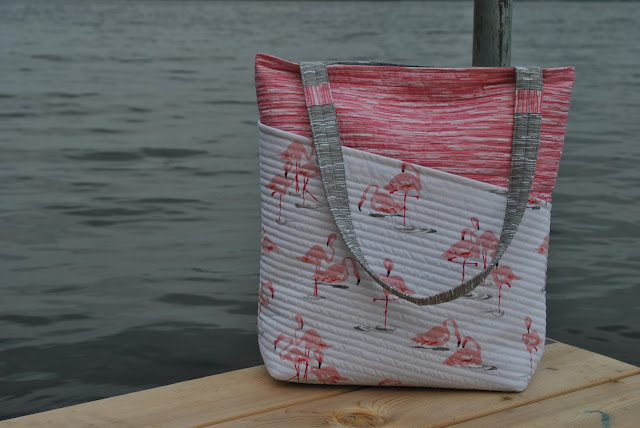I used the "X" version of the pattern, choosing turquoise and bright pink for the X. All of the fabrics used on the front of the quilt were scraps from previous projects. It was a good way to use up smaller pieces that still have an impact.
For the backing, I had lots of bright pink fabrics in my stash, from a Color Me Happy bundle, but I don't often use them in my own quilts. I prefer pink in moderation. I thought these playful prints would work for a pieced back.
The pattern for the back was suggested at a class I took. It involves cutting two squares the same size and sewing them right sides together along all four edges. Then you draw an X from corner to corner on one of the squares and using scissors, cut just that side open along the X. This gives you triangles on each side of the square, making a bigger square. You continue to add squares the size of your new square, making it bigger each time. It ended up as a sort of double-sided quilt!
For the quilting, I went with an all-over pattern of loops and curves, using royal blue thread and staying on the background fabric. I used the rest of the Color Me Happy scraps for the binding. I was working at the cottage and didn't have my Wonder clips. I didn't realize what a difference they make until I didn't have them!
So that's another way to use my Tilted Quilt Pattern and a nice entry into sewing with parallelograms. It's the last day to enter to win a free copy of the pattern, so head over to the first post for a chance.
For previous posts on the Tilted Quilt Pattern:

















































